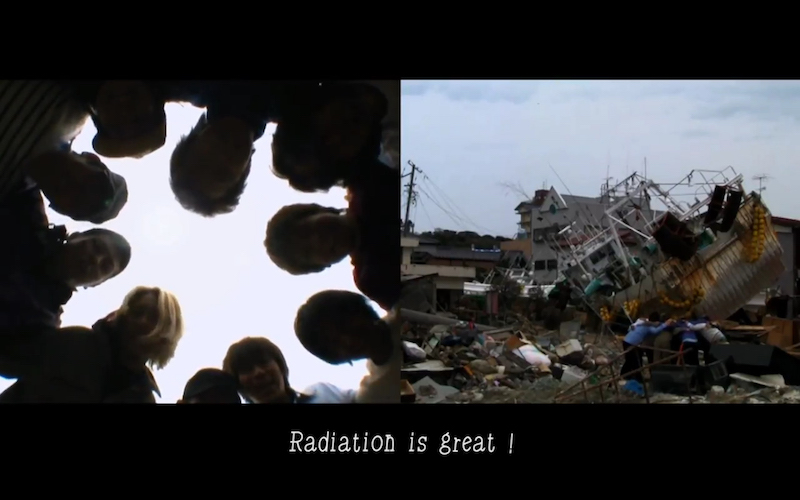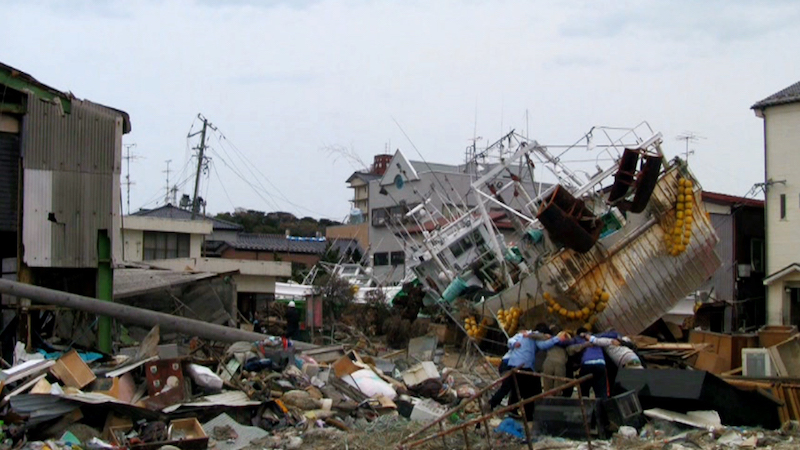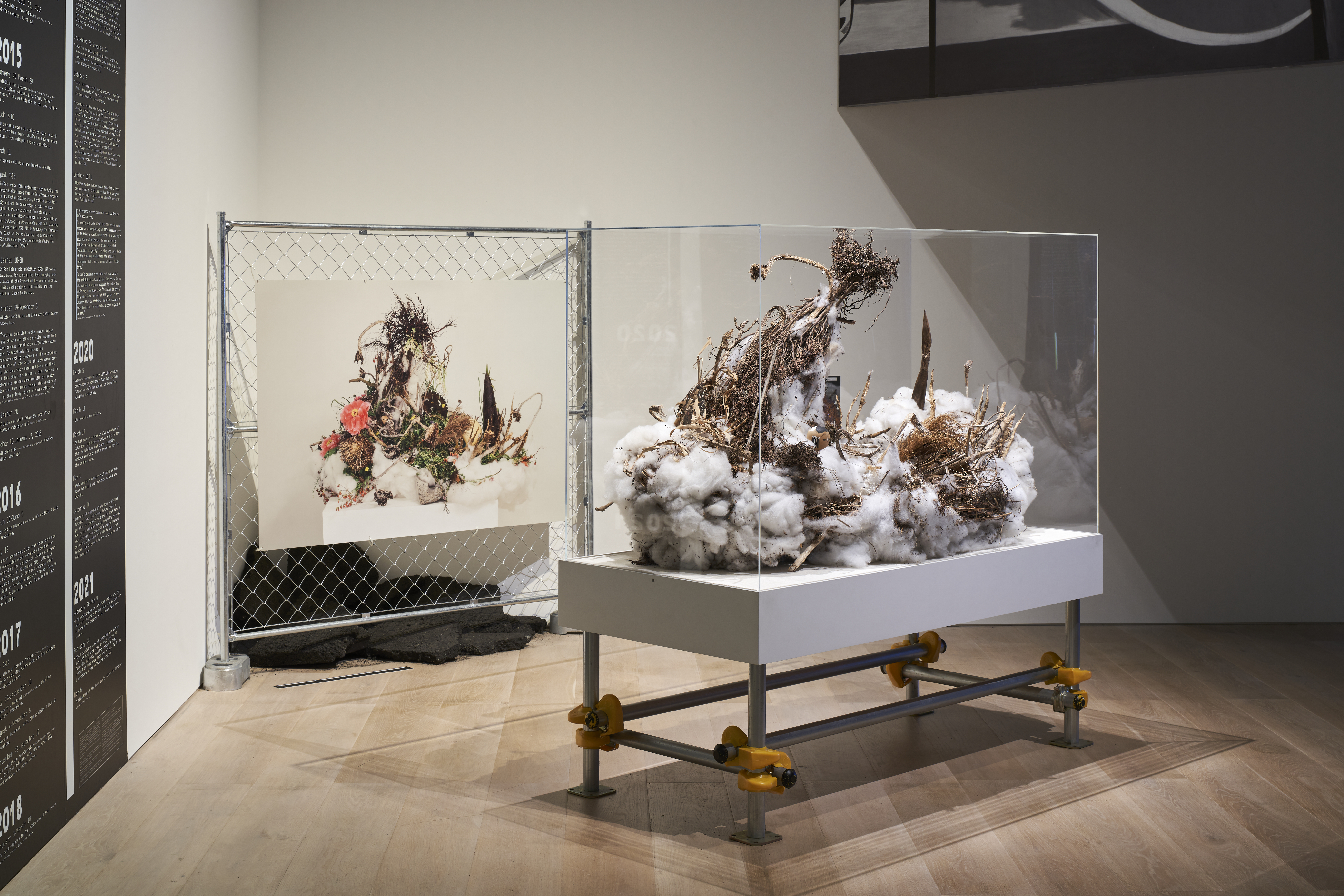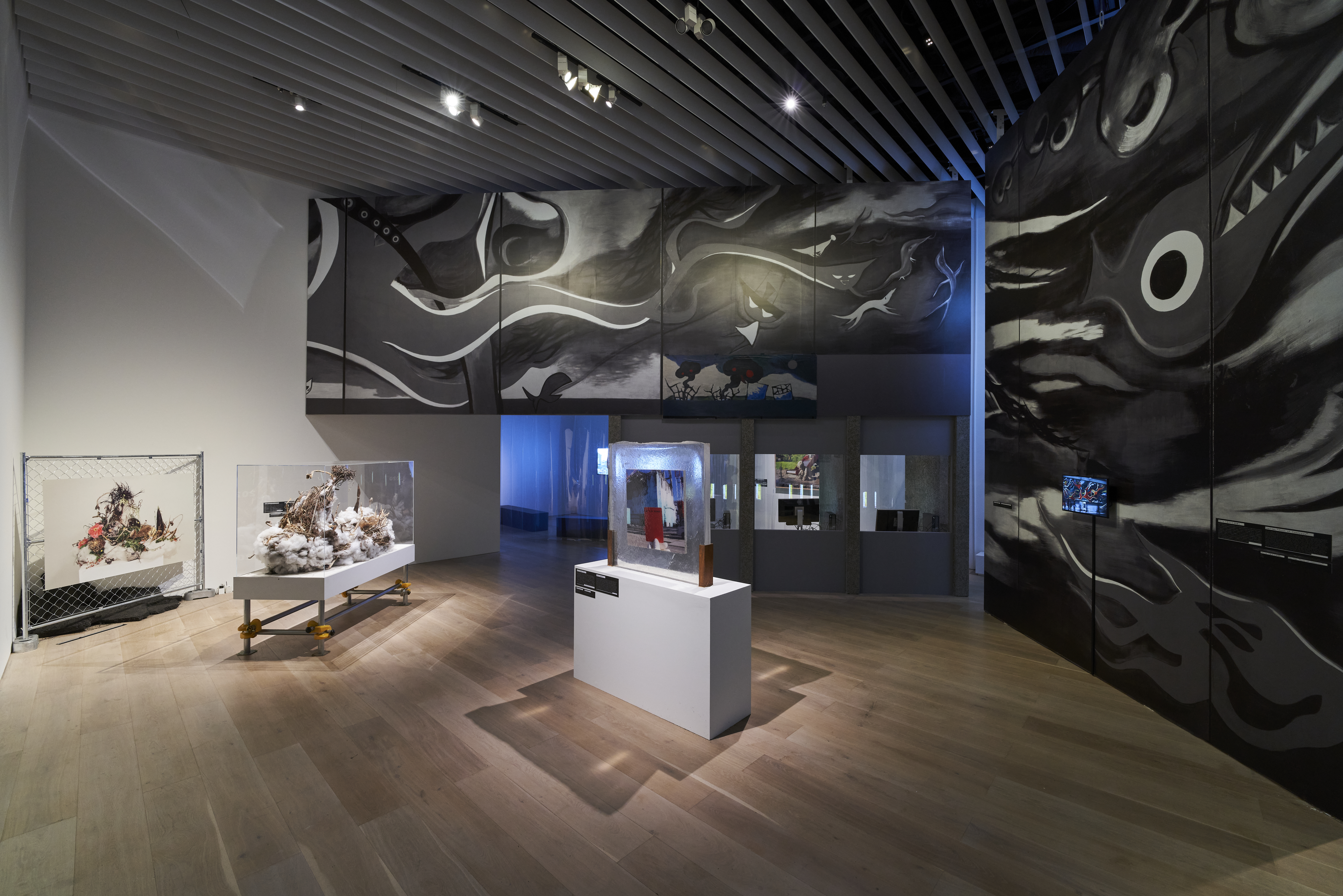
- ---
Project Index -
BENTEN 2024BENTEN 2024 2024
ナラッキーNa-Lucky 2023
DOBUROKGEOLLIDOBUROKGEOLLI 2022
いつのことだか思いだしてごらんいつのことだか思いだしてごらん 2022
改名Name Change 2022
くらいんぐみゅーじあむCrying Museum 2022
SUNSUN 2022
はい、こんにちは Hello There 2020
May, 2020, TokyoMay, 2020, Tokyo 2020
A Drunk PandemicA Drunk Pandemic 2019
にんげんレストランNingen restaurant 2018
道Street 2017-
The other side 2017
Scrap & Build 2 2017
Scrap & Build 2016
Don't Follow The Wind initiated by Chim↑Pom 2015-
堪え難きを耐え↑忍び難きを忍ぶ10th ANNIVERSARY EXHIBITION 2015
金三昧KANE-ZANMAI 2014-
パラドックスPARADOX 2014
LOVE IS OVER 2014
マッドエリイMAD ELLIE 2013-
GARBAGE 2012-
PAVILION 2012-
REAL TIMES 2011
パズルPUZZLE 2011,2014-
IMAGINEIMAGINE 2010
BLACK OF DEATH 2008,2013
広島HIROSHIMA 2008-
日本のアートは10年おくれている 世界のアートは7,8年おくれているJAPANESE ART IS 10 YEARS BEHIND, AND ART OF THE WORLD IS 7 OR 8 YEARS BEHIND. 2008
友情か友喰いか友倒れかBecoming Friends, Eating Each Other or Falling Down Together 2008
TPA 2007
サンキューセレブプロジェクト・アイムボカンTHANK YOU CELEB PROJECT "I'M BOKAN" 2007
ともだちTOMODACHI 2007
オレオレORE-ORE 2007
エロキテルEROKITEL 2007-
スーパーラットSUPER RAT 2006-
BODY 2005-
- ---
Overview open/close - 2011年3月11日の東日本大震災と福島第一原発での事故を受けて製作された作品群。巨大な現実を前にアートの無力が語られ、多くの展覧会が自粛された中、Chim↑Pomは現地に赴いて作品を制作。また、渋谷駅に永久設置されている、日本の被爆のクロニクルとも言える巨大壁画「明日の神話」に福島原発の事故の絵をゲリラで付けたし社会的事件を引き起こした。それらで構成され、5月に自主開催した「Real Times」展は、日本における震災・原発事故への代表的なレスポンスとして、特に海外で報道された。 REAL TIMES is a series of works produced in response to the Great East Japan Earthquake on March 11, 2011, and the following accident at the Fukushima Daiichi nuclear power plant. Facing such overwhelmingly gigantic events in reality, people unanimously of powerlessness of art here and there while a number of exhibitions were cancelled as something impolite, against which ChimPom departed to the accident site to produce works. Chim↑Pom also triggered a social phenomenon after posting a panel depicting the nuclear power plant accident next to "Myth of Tomorrow" by Taro Okamoto, a huge mural permanently installed in Shibuya station and seen as a chronicle of nuclear exposure experiences of Japan. "REAL TIMES" exhibition was held independently in May with these works and eventually reported in many countries as the representative response to the quake and nuclear accident in Japan.
- ---
Media open/close -
TBSラジオ「荻上チキ・Session-22」【音声配信&作品全音声】「表現の不自由展・その後」で物議を呼んでいる映像作品「気合い100連発」の制作意図とは? Chim↑Pom・卯城竜太×荻上チキ
BuzzFreed News「反日」「福島ヘイト」と批判。アーティストが作品に込めた本当の思いとは
Yahoo!JAPANニュース「あいトリ」騒動は「芸術は自由に見ていい」教育の末路かもしれない
MoMA PS1Chim↑Pom
PBS FRONTLINEActivist Art Challenges a Post-Disaster Japan
CNN TravelArt guerrillas Chim Pom stage show in a box
Tokyo RisingPART3: ART FLUX
新潮45岡本太郎「明日の神話」をめぐる「レベル7」椹木野衣
Artscape JapanNihilist Moralists for a Traumatized Japan: Chim Pom's "Real Times" Alan Gleason
- ---
Index open/close -
Red Card 2011
REAL TIMES 2011
without say GOODBYE 2011
Level 7 feat.『明日の神話』 2011
気合い100連発 2011
被曝花ハーモニー 2011
日本犬 2011
Never Give Up 2011
Red Card 2011
REAL TIMES 2011
without say GOODBYE 2011
Level 7 feat.'Myth of Tomorrow' 2011
KI-AI 100 2011
Radiation-Exposed Flowers Harmony 2011
Japanese Dog 2011
Never Give Up 2011
- ---
Red CardRed Card open/close -
2011
2011年10月から約2カ月間、水野は福島第一原子力発電所の収束作業に従事した。世界一禍々しいところのように思え、不安もあったが、これまで経験した肉体労働の仕事と同じで、現場は整理されていた。撮影のタイミングを計りながら日々の仕事をこなし、ある日の休憩時間にカメラを持って撮影スポットへ向かった。大爆発した3号機を目の前にして、名もなき作業員たちの強さや誇りを感じながら、セルフタイマーをセットした。 2011
Toshinori Mizuno worked at the Fukushima Daiichi Nuclear Power Station for two months from October 2011. He was afraid that it might be one of the most horrible places on Earth but when he got there, he found that the job was the same as any other manual labor job he had done before and that the place was organized. He did his everyday job, waiting for the right time to take a photo. One day, during break time, he went over to the spot where he would take his picture. With the exploded reactor No. 3 in front of him, he felt the strength and dignity of those nameless workers as he set the self-timer on his camera. 
Red Card
2011
ラムダプリント(2点組 69×85cm、32×40cm)
Courtesy of the artist, ANOMALY and MUJIN-TO ProductionRed Card
2011
Lambda print (a set of 2 works. 69×85cm、32×40cm)
Courtesy of the artist, ANOMALY and MUJIN-TO Production
Red Card
2011
ラムダプリント(2点組 69×85cm、32×40cm)
Courtesy of the artist, ANOMALY and MUJIN-TO ProductionRed Card
2011
Lambda print (a set of 2 works. 69×85cm、32×40cm)
Courtesy of the artist, ANOMALY and MUJIN-TO Production
- ---
REAL TIMESREAL TIMES open/close -
2011
〈3.11〉から1カ月後の4月11日、原発事故によって無人の街となった警戒区域に入り込み、福島第一原子力発電所から約700メートルにある東京電力敷地内展望台に登頂、旗を用いたパフォーマンスをした一連の行動を記録した作品。東京電力発表の放射線量は毎時199マイクロシーベルト。正門付近に車を停めて、片道約20分のトレッキングで向かう。初日の出のスポットとしてPRされていた展望台からは、白煙を上げる4号機建屋と大量の汚染水が流れ出た太平洋が見えた。そして、展望台で広げた白旗に赤いスプレーで日の丸を描き、それを放射能マークへと改変。月 面やエベレストなどの「到達困難」な場所での慣例に倣い、その旗を掲げた。タイトルは、「まさに、いま」という意味の「リアルタイム」、映画「モダン・タイムス」よろしく「リアルな時代」、そして「ニューヨーク・タイムズ」などのメディアをもじり、警戒区域内での報道が皆無だった当時の状況に対して、「現実の報道」という三つの意味を併せ持たせた。 2011
On April 11, just a month after the 3.11 incident, Chim↑Pom trespassed in the hazardous areas of towns that became uninhibited as a result of the nuclear accidents, heading for a lookout point on the site of the TEPCO (Tokyo Electric Power Company) facility, approximately 700 meters from the Fukushima Daiichi Nuclear Power Plant. TEPCO had estimated radiation levels to be 199μSv/hr. Having parked their car near the main gate, Chim↑Pom made a 20 minute trek to reach their destination. From the top of the lookout – which was previously promoted as a site for spectulating the New Year’s sunrise – was the view of white smoke rising from Reactor 4, and the Pacific Ocean, of which a vast amount of contaminated water was leaking into. Chim↑Pom stretched out a white fag, sprayed a red circle on it to resemble the red circle of the Japanese fag, changed it further to a radiation symbol, and raised the fag following the custom of “the pole of inaccessibility” like on the moon or Mt. Everest. The title REAL TIMES has three meanings; as this very moment “right now,” as a “real era” like the film title Modern Times, and as a media title of newspapers like The New York Times, in claim against the situation in which the reality inside these hazardous areas were never reported through mass media. 
REAL TIMES
2011
ビデオ(11分 11秒)
Courtesy of the artist, ANOMALY and MUJIN-TO ProductionREAL TIMES
2011
Video (11’ 11'')
REAL TIMES
2011
ビデオ(11分 11秒)REAL TIMES
2011
Video (11’ 11'')
Courtesy of the artist, ANOMALY and MUJIN-TO Production
- ---
without SAY GOODBYEwithout SAY GOODBYE open/close -
2011
福島第一原子力発電所の原子炉建屋に近接する、打ち捨てられた状態にあった畑に設置した、防護服とガスマスク姿の案山子。避難した住民と原発作業員へのオマージュとして制作して撮影、葬式用の額に額装した。 2011
Chim↑Pom installed and took a picture of a scarecrow wearing a protective suit and gas mask in a totally abandoned farm close to the Fukushima Daiichi Nuclear Power Station, as homage to evacuated locals and workers at the nuclear power station. It was framed in a funeral photo frame. 
without SAY GOODBYE
2011
ラムダプリント、額
29.5×24.5cm(プリント)、43×34.5cm(額)
Courtesy of the artist, ANOMALY and MUJIN-TO Productionwithout SAY GOODBYE
2011
Lambda print, frame
29.5x24.5cm (image size), 43x34.5cm (size including frame)
Courtesy of the artist, ANOMALY and MUJIN-TO Production
- ---
Level 7 feat.『明日の神話』Level 7 feat.'Myth of Tomorrow' open/close -
2011
渋谷駅にある岡本太郎の壁画《明日の神話》右下にある隙間に、福島第一原子力発電所の事故を描いた絵をゲリラ設置したプロジェクト。原子炉建屋からドクロ型の黒い煙が上がる様子を壁画と同じタッチで紙に描き、それを塩ビ板に貼ったものを、壁画の連続した一部として自然に見えるように設置した。通行人が撮影した画像がネット上で拡散され、匿名の行為として議論を巻き起こした。《明日の神話》は、日本の被曝のクロニクルだ。広島・長崎の原爆、第五福竜丸の水爆......、そして2011年、現実によってこのクロニクルは更新された。Chim↑Pomによって《明日 の神話》の余白に追加された福島第一原発の爆発の絵は、岡本太郎の「描かれなかった」絵であるとともに、ヒロシマ以降を生きた全日本人の現実である。 2011
A guerrilla style installation project in which a panel depicting the accident at Fukushima Daiichi Nuclear Power Station was added to the bottom-right corner of the existing mural Myth of Tomorrow by Taro Okamoto in Shibuya Station. On a piece of paper attached to a PVC panel, the image of rising black smoke in a skull shape was painted in the same style as the mural so that it appeared natural as if it was a sequential part of the painting. Initially, it triggered controversy as an anonymous act, with news of it being spread through Internet posts by passing pedestrians. Myth of Tomorrow is a chronicle of the nuclear exposure in Japan. Witnessing the atomic bombing in Hiroshima and Nagasaki and the hydrogen bomb exposure of the Lucky Dragon No. 5..., and in 2011, reality updated this chronicle. Chim↑Pom added the figure of the explosion at the Fukushima Daiichi Nuclear Power Station to the blank, as a figure that Taro Okamoto was “unable to execute” himself and as the reality for all Japanese people living after Hiroshima. -
ステイトメント
渋谷駅にある巨大壁画≪明日の神話≫は、岡本太郎が描いた日本の被曝 のクロニクルだ。 広島・長崎の原爆、第五福竜丸の水爆.....20世紀を飛んでいた放射線は、原発の安全神話とともに、戦争から平和へと世紀を跨いで引き継がれてきた。≪明日の神話≫は展示場所であったホテルの都合から、不定形な形で完成されている。 絵の中で、第五福竜丸が被曝した太平洋は、真ん中で燃える人の下から右下へと続き、その水平線を欠けた余白で途切れさせていた。そして余白はただの壁として、予言的な空白を21世紀にもたらしてきた。2011年、現実によってこのクロニクルは更新された。Chim↑Pomによって≪明日の神話≫の余白に追加された、福島第一原発の爆発の絵は、岡本太郎の「描かれなかった」絵であると共に、ヒロシマ以降を生きた全日本人の現実である。今後、≪LEVEL7 feat.『明日の神話』≫は常に≪明日の神話≫とともにある。 それを余白から見るために僕たちが必要とするものは、歴史や放射線と同じく、もはや目ではなく想像力だ。僕たちは、この想像力こそがグラウンドゼロにとっての可能性であり、未来を作る最も根本的な力だと思っている。そしてアートはそのためにあるということを強く信じている。
Chim↑Pom 2011 Statement
The huge mural Myth of Tomorrow by Taro Okamoto in Shibuya station is a chronicle of the nuclear exposure of Japan.Witnessing the atomic bombing in Hiroshima and Nagasaki and the hydrogen bomb exposure of the Lucky Dragon 5, radiation has traveled through the 20th century and to the present day over centuries, from war to peace, together with the safety myth of the nuclear power plant.Myth of Tomorrow was completed in an unnatural form due to the shape of a hotel where the work was originally located. In the mural, the Pacific Ocean, with the Lucky Dragon 5 being exposed to nuclear ash, spans its horizon from under the central figure of a burning man to the lower bottom, where the horizon is interrupted with a blank space.The margin was left as an ordinary wall, providing a prophetic blank to the 21st century. In 2011, reality updated this chronicle. Chim↑Pom added the figure of the explosion at the Fukushima Daiichi Nuclear Power Station to the blank, as a figure “unexecuted” by Taro Okamoto himself and as the reality of all the Japanese people living after Hiroshima. LEVEL 7 feat. “Myth of Tomorrow” will always be together with Myth of Tomorrow forever. To see the work through its absence must require our imagination instead of eyes, just as to conceive of history or radiation We believe imagination is the very possibility for ground zero, and the most fundamental power to create the future. And we believe art exists as such.
Chim↑Pom 2011 
LEVEL 7 feat.『明日の神話』
2011
ビデオ(6分35秒)、塩化ビニール板、紙、アクリル絵の具、ほか
200×84cm
Courtesy of the artist, ANOMALY and MUJIN-TO ProductionLevel 7 feat.'Myth of Tomorrow'
2011
Video (6' 35"), PVC panel, paper, acrylic, etc.
200×84cm
Courtesy of the artist, ANOMALY and MUJIN-TO Production
LEVEL 7 feat.『明日の神話』
2011
ビデオ(6分35秒)、塩化ビニール板、紙、アクリル絵の具、ほか
200×84cm
Courtesy of the artist, ANOMALY and MUJIN-TO ProductionLevel 7 feat.'Myth of Tomorrow'
2011
Video (6' 35"), PVC panel, paper, acrylic, etc.
200×84cm
Courtesy of the artist, ANOMALY and MUJIN-TO Production
- ---
気合い100連発KI-AI 100 open/close -
2011
2011年5月、東日本大震災の被災地である福島県相馬市で知り合った若者たちと、100連発の気合いを入れた様子を収めた映像作品。家を流され、大事な人を失った彼らは、放射能の恐怖のなか、壊滅した街で約2カ月間を過ごしていた。相馬市は福島第一原子力発電所が近いことも影響し、報道が集中した被災地と違って外からのボランティア不足が続いていた地域。被災者でありながらも自ら救援活動や復興作業にずっと携わってきた彼らによるリアルな叫びは、すべてアドリブ、一発撮りで収録された。 2011
This video work features Chim↑Pom members with friends in Soma City, Fukushima. They gathered in May 2011 and did 100 sequential yells of “KI-AI” which is the Japanese word for shouts that show a fighting spirit in martial arts. As one of the affected areas of the Great East Japan Earthquake, Soma City locals spent over two months in the destroyed city under fear of radiation. They lost their loved ones and their homes. Unlike other areas that were intensively covered by mass media, and also due its proximity to the Fukushima Daiichi Nuclear Power Station, Soma City suffered from a shortage of volunteers. These were real shouts filmed all in one-cut and ad-libbed, by young locals who, although being victims themselves, had continued to provide relief and help towards reconstruction. 
気合い100連発
2011
ビデオ(10分30秒)
Courtesy of the artist, ANOMALY and MUJIN-TO ProductionKI-AI 100
2011
Video (10' 30”)
Courtesy of the artist, ANOMALY and MUJIN-TO Production
気合い100連発
2011
ビデオ(10分30秒)
Courtesy of the artist, ANOMALY and MUJIN-TO ProductionKI-AI 100
2011
Video (10' 30”)
Courtesy of the artist, ANOMALY and MUJIN-TO Production
- ---
被曝花ハーモニーRadiation-Exposed Flowers Harmony open/close -
2011
福島第一原子力発電所から30キロの警戒区域で採取した植物で制作した生け花。フラワーアーティスト、柿崎順一とのコラボレーション。植物は動物と違って逃げられない。植物は放射能に苦しむのだろうか。花の何かが変わったとして、その美しさも変わるのだろうか。危険区域にも関わらず、いまも草花や木は相変わらず生い茂っている。むしろ立ち入り禁止区域の花たちは、今後さらに「狂い咲く」かもしれない。生け花の「切られても生きる」力強い姿には、自ら蒔いた問題に右往左往する人間への「癒し」だけではない、むしろ自らの「運命を全うする」ような美しさがあるのではないか。 生け花の起源は「献花」にあると言われている。僕たちはこれをすべての逆境で生きる生命に献じたいと思った。 2011
In collaboration with flower artist Junichi Kakizaki, this ikebana [the Japanese art of flower arrangement] is made out of plants found around the 30-kilometer radius surrounding the Fukushima Daiichi Nuclear Power Station. Plants cannot run away like animals do. What kind of effect will radiation have on plants: Will they suffer? Does the beauty of the flower differ if something were to happen to them? Te plants remain in the hazardous zone yet do nothing but continue to grow. They might rather bloom massively in the uninhibited zone after all, as the art of ikebana is to nurture the plants vitality beyond human understanding, keeping them alive by cutting them up. Te mighty way in which plants survive does not only represent the healing of human beings with self inflicted wounds, but rather there exists certain beauty while they carry out their destiny. They say the origin of ikebana comes from flower offering. Tis piece is dedicated to all lives that confront adversities. 
被曝花ハーモニー
2011
植物、ほか
撮影:宮島径
Courtesy of the artist and MUJIN-TO ProductionRadiation-Exposed Flowers Harmony
2011
plants, etc.
Photo: Kei Miyajima
Courtesy of the artist and MUJIN-TO Production
被曝花ハーモニーRadiation-Exposed Flowers Harmony
2011/2022 植物、ほか、100 x 120 x 80cm
展示風景:「Chim↑Pom展:ハッピースプリング」森美術館(東京)2022年
共同制作:柿崎順一、撮影:森田兼次
画像提供:森美術館2011/2022 Dimensions variable, 100 x 120 x 80cm
Installation view: Chim↑Pom: Happy Spring, Mori Art Museum, Tokyo, 2022
In collaboration with Kakizaki Junichi , photo: Kenji Morita
Photo courtesy: Mori Art Museum, Tokyo
被曝花ハーモニーRadiation-Exposed Flowers Harmony
2011/2022 植物、ほか、100 x 120 x 80cm
展示風景:「Chim↑Pom展:ハッピースプリング」森美術館(東京)2022年
共同制作:柿崎順一、撮影:森田兼次
画像提供:森美術館2011/2022 Dimensions variable, 100 x 120 x 80cm
Installation view: Chim↑Pom: Happy Spring, Mori Art Museum, Tokyo, 2022
In collaboration with Kakizaki Junichi , photo: Kenji Morita
Photo courtesy: Mori Art Museum, Tokyo
- ---
日本犬Japanese Dog open/close -
2011
東北地方太平洋沖地震で倒壊した家の庭の前で、首輪をした犬が喉を鳴らしていた。数秒見つめ合う。犬はこちらを気にしながら家のほうへと歩き出す。が、すぐに立ち止まって、またこちらを振り返る。目が合うと再び家へと歩き出す。ついていくと、2階の布団の上に足を怪我した別の犬がいた。器が落ちていて、そこで餌を与えられた形跡がある。水とシーチキンを入れると、犬は足を引きずりながら寄ってくる。やはりおなかが減っていたのか、あっという間に食べ終えて、また足を引きながら元の布団に戻っていった。 2011
There was a dog with a collar in front of a collapsed house from the 2011 Tohoku earthquake and tsunami, which growled and stared at us. It started walking towards the house but immediately stopped and looked back at us. Looking at us in the eye, the dog started to walk to the house again. We kept following the dog, and ended up finding another injured dog on the second floor. We noticed a bowl nearby. Seemingly the dogs were being fed. We put some water and canned tuna in it, and the injured dog tried to wriggle and come closer. As expected, it was starving and ate everything up in a moment. It then wriggled back to its bed. 
日本犬
2011
ラムダプリント、被災した額
33.5×43cm(額)
Courtesy of the artist, ANOMALY and MUJIN-TO ProductionJapanease Dog
2011
Lambda print, devastated frame
33.5x43cm (size including frame)
Courtesy of the artist, ANOMALY and MUJIN-TO Production
- ---
Never Give UpNever Give Up open/close -
2011
東日本大震災後、広島の被爆者団体代表である坪井直氏から送られたファクスを、福島で被災した額縁を使って額装した作品。この言葉は、講演など折に触れて50年以上使ってきた、彼の座右の銘である。壊滅と放射能を乗り越えてきた広島で被爆者として生き、自らの死後になるかもしれない「核廃絶」という人類的命題を訴え、そして自らの病魔と闘い続けてきた坪井氏によるこの言葉は、21世紀の日本にとって重い意味を持つ。 2011
Using a frame that survived the Great East Japan Earthquake, Chim↑Pom framed a piece of fax paper sent from Sunao Tsuboi, who is a representative of an A-bomb victim organization in Hiroshima. For over 50 years, this has been the motto Tsuboi used in speeches and public occasions. As an A-bomb survivor living in Hiroshima who endured the devastation and radiation Tsuboi has struggled against his disease and called for the total abolition of nuclear weapons as a theme for all human beings, even though it might only be accomplished after his death. Tis motto is enormously significant to 21st century Japan. 
Never Give Up
2011
坪井直による題字、被災した額
39.7×47.3cm(額)
Courtesy of the artist, ANOMALY and MUJIN-TO ProductionNever Give Up
2011
Title by Sunao Tsuboi, devastated frame
39.7×47.3cm (size including frame)
Courtesy of the artist, ANOMALY and MUJIN-TO Production